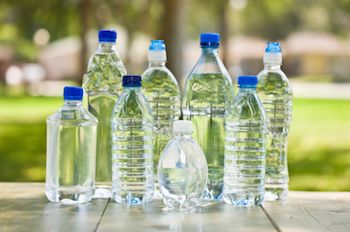
تاریخچه آب بسته بندی در ایران
اساساً مطالعه بر روی موضوع آب های معدنی ایران به صورت آکادمیک طی سالهای 1318 در دانشکده داروسازی تهران توسط مرحوم دکتر مافی و دکتر صادق مقدم و پس از آن توسط آقای دکتر محمد جواد جنیدی از اساتید رشته آبشناسی آغاز گردید که نهایتاً توسط مرحوم دکتر عباس خدابنده استاد آبشناسی و رئیس اسبق دانشکده داروسازی ادامه یافت و طی سالهای 1340 به بعد آقایان دکتر محمدرضا غفوری و دکتر محمود شریعت نیز در بررسی آبهای معدنی ایران مشارکت نمودند.
اساساً مطالعه بر روی موضوع آب های معدنی ایران به صورت آکادمیک طی سالهای 1318 در دانشکده داروسازی تهران توسط مرحوم دکتر مافی و دکتر صادق مقدم و پس از آن توسط آقای دکتر محمد جواد جنیدی از اساتید رشته آبشناسی آغاز گردید که نهایتاً توسط مرحوم دکتر عباس خدابنده استاد آبشناسی و رئیس اسبق دانشکده داروسازی ادامه یافت و طی سالهای 1340 به بعد آقایان دکتر محمدرضا غفوری و دکتر محمود شریعت نیز در بررسی آبهای معدنی ایران مشارکت نمودند.صرف نظر از تاریخچه فوق ، آنچه که امروزه آنرا به عنوان صنعت بسته بندی آب می نامند و طی آن با استفاده ازاستحصال و استخراج آب از چشمه ها و سفره های زیر زمینی محصولاتی تحت عنوان آبهای معدنی و یا آشامیدنی بسته بندی شده ارائه مینمایند از ابتدای دهه 50 در ایران آغاز شده است .
اولین کارخانه آب بسته بندی ایران به نام آمولو در سال 1350 با استفاده از آب خروجی از چشمه آب معدنی پرسم واقع در دامنه رشته کوههای البرز تاسیس گردید که محصولات خود را در بطریهای شیشه ای به بازار عرضه نمود ، وجود املاح در مقادیر بالا از ویژگیهای منحصر بفرد این چشمه بشمار میرفت .با توجه به اینکه تولیدات کارخانه آب معدنی آمولو در مقیاس و ظرفیت کم بود لذا میتوان از شرکت آبهای معدنی دماوند به عنوان اولین تولید کننده آب معدنی بسته بندی در مقیاس صنعتی و برخوردار از تکنولوژی روز دنیا نام برد که در سال 1356 فعالیت خود را آغاز نمود و به جرات میتوان گفت که شرکت مذکور یکی از عوامل اصلی آشنایی مردم کشور با محصولات صنعت بسته بندی آب بود .
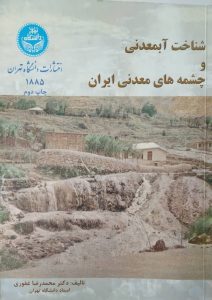
انواع آب بسته بندی
بطورکلی براساس طبقه بندی انجام گرفته توسط سازمان ملی استاندارد ، انواع آب بسته بندی عبارتند از :
1- آب معدنی طبیعی
2- آب آشامیدنی بسته بندی شده
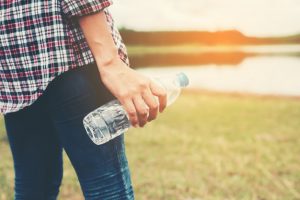
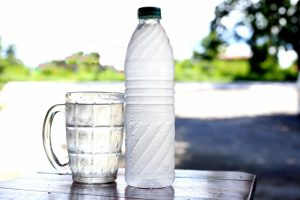
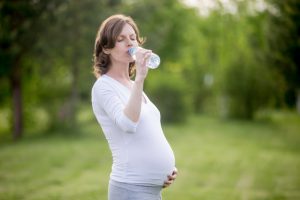

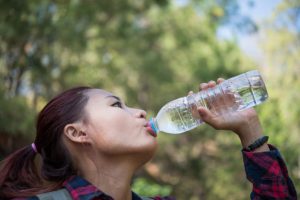
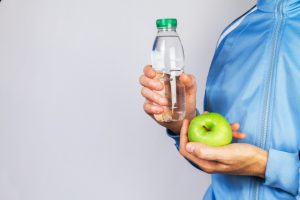

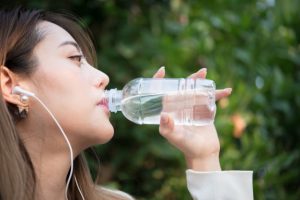

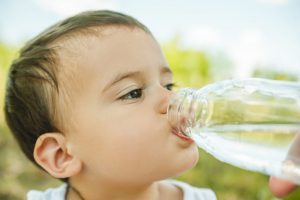


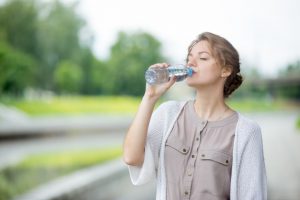
آبي است كه با آب آشاميدني به دلايل زير قابل تشخيص است :
الف – بوسيله محتواي املاح معدني خاص، عناصر كمياب Trace Elements و ديگر تركيبات مشخص مي گردد.
ب – از منابع طبيعي مانند چشمه و نقاط حفاري شده از سفره هاي آب زير زميني بدست مي آيد، و كليه اقدامات احتياطي براي جلوگيري از هرگونه آلودگي يا تأثيرات خارجي روي كيفيت آن بايد انجام گيرد.
ج – تركيبات آن در فصول مختلف سال از ثبات نسبي برخوردار است
د – تحت شرايطي كه ويژگيهاي آن تغيير نكند جمع آوري مي شود.
ه – در نزديكترين محل ممكن به سرچشمه آب، تحت شرايط بهداشتي خاص بسته بندي مي شود.
و- هيچگونه فرآيند پالايش و تصفیه به جز فرايندهايي كه در بند 8-2 استاندارد ملی ایران تعیین گردیده در مورد آن بکار نمیرود .
همچنیین مطابق استاندارد ملی ایران انواع آب معدنی طبیعی عبارتند از :
– آب معدنی طبیعی گازدار
– آب معدنی طبیعی بدون گاز
– آب معدنی طبیعی گازدار شده
– آب معدنی طبیعی گاززدایی شده
– آب معدنی طبیعی غنی از گاز اکسیژن
علاقه مندان به دریافت اطلاعات بیشتر میتوانند به بخش استانداردها در همین وب سایت مراجعه نمایند.
آب آشامیدنی است که در ظروف بسته بندی و بطور طبیعی دارای املاح بوده و یا به آن اضافه میشود همچنین میتواند بطور طبیعی دارای گاز کربنیک باشد و یا اینکه به ان اضافه شود از سوی دیگر افزودنهرگونه مواد دیگر مانند شیرین کننده و طعم دهنده به آن مجاز نمی باشد.
**آبهای طعم دار بر اساس استاندارد ملی ایران در زیر گروه نوشابه های گاز دار تعریف میگردندو تعریف مذکور در حال حاضر در استاندارد شماره 1250 و در قسمت 4-1-3 تحت عنوان ” نوشابه های گازدار نوع طعم دار و بدون رنگ ” ارائه شده است. (بطور معمول آبهای طعم دار با هدف ایجاد احساس گوارایی بیشتر نزد مصرف کننده به صورت گازدارتولید میگردند لذا بدلیل وجود مواد افزدونی ، شیرین کننده و گاز در زیر گروه نوشابه های گازدارقرارگرفته اند )
**از آنجا که اضافه نمودن ترکیبات مختلف همچون الکترولیتها و قند و یا ویتامینها به آب موجب تغییر ترکیب آب میگردد لذا آبهای ورزشی و آبهای ویتامینه بر اساس استاندارد ملی ایران در زیر گروه نوشابه های ورزشی تعریف میگردند و تعریف مذکور در حال حاضر در استاندارد شماره 6693 ارائه شده است . بطور کلی نوشابه ورزشی نوشابه اي است حاوي قند و الكتروليت هاي مختلف كه مصرف آن به جبران آب ، انرژي و مواد معدني از دست رفته بدن كمك مي كند ، نوشابه های ورزشی خود به انواع ایزوتونیک Isotonic،هایپرتونیک Hypertonic و هیپوتونیک Hypotonic تقسیم میشوند.
تعاریف بین المللی آب بسته بندی
Definition of natural mineral water
Natural mineral water is a water clearly distinguishable from ordinary drinking water because:
a) it is characterized by its content of certain mineral salts and their relative proportions and the presence of trace elements or of other constituents;
b) it is obtained directly from natural or drilled sources from underground water bearing strata for which all possible precautions should be taken within the protected perimeters to avoid any pollution of, or external influence on, the chemical and physical qualities of natural mineral water;
c) of the constancy of its composition and the stability of its discharge and its temperature, due account being taken of the cycles of minor natural fluctuations;
d) it is collected under conditions which guarantee the original microbiological purity and chemical composition of essential components;
e) it is packaged close to the point of emergence of the source with particular hygienic precautions;
f) it is not subjected to any treatment other than those permitted by this standard
Packaged waters
“Packaged waters”, other than natural mineral waters, are waters for human consumption and may contain minerals, naturally occurring or intentionally added; may contain carbon dioxide, naturally occurring or intentionally added; but shall not contain sugars, sweeteners, flavourings or other foodstuffs.
Waters defined by origin
“Waters defined by origin”, whether they come from the underground or from the surface, defined under the present standard share the following characteristics:
a) they originate from specific environmental resources without passing through a community water system;
b) precautions have been taken within the vulnerability perimeters to avoid any pollution of, or external influence on, the chemical, microbiological and physical qualities of water at origin;
c) collecting conditions which guarantee the original microbiological purity and essential elements of their chemical make-up at origin;
d) from the microbiological standpoint, are constantly fit for human consumption at their source and are kept in that state with particular hygienic precautions until and while packaging in accordance with provisions of sections 3 and 4;
e) are not subject to any modification or treatment other than those permitted under Section 3.1.1.
Prepared waters
“Prepared waters” are waters that do not comply with all the provisions set for waters defined by
origin under subsection ” Waters defined by origin ” They may originate from any type of water supply.
DEFINITION of Natural Minera Water
“Natural mineral water” means microbiologically wholesome water, within the meaning of Article 5, originating in an underground water table or deposit and emerging from a spring tapped at one or more natural or bore exits.
Natural mineral water can be clearly distinguished from ordinary drinking water: (a) by its nature, which is characterized by its mineral content, trace elements or other constituents and, where appropriate, by certain effects;
(b) by its original state,
both characteristics having been preserved intact because of the underground origin of such water, which has been protected from all risk of pollution.
These characteristics, which may give natural mineral water properties favourable to health, must have been assessed:
(a) from the following points of view: 1. geological and hydrological,
physical, chemical and physico-chemical,
microbiological,
if necessary, pharmacological, physiological and clinical;
(b) according to the criteria listed in Section II;
(c) according to scientific methods approved by the responsible authority.
The analyses referred to in (a) (4) may be optional where the water presents the compositional characteristics on the strength of which it was considered a natural mineral water in the Member State of origin prior to the entry into force of this Directive. This is the case in particular when the water in question contains, per kg, both at source and after bottling, a minimum of 1 000 mg of total solids in solution or a minimum of 250 mg of free carbon dioxide.
The composition, temperature and other essential characteristics of natural mineral water must remain stable within the limits of natural fluctuation ; in particular, they must not be affected by possible variations in the rate of flow.
Within the meaning of Article 5 (1), the normal viable colony count of natural mineral water means the reasonably constant total colony count at source before any treatment, whose qualitative and quantitative composition taken into account in the recognition of that water is checked by periodic analysis.
DEFINITION of Spring Water
Like natural mineral water, spring water must also come from a specified underground source (via a spring or borehole) and be microbiologically safe at source without disinfection. It must be bottled at source in bottles fitted with a tamper-evident seal. The label must state the origin and source name.
The main differences to natural mineral waters are that a stable mineral balance is not a requirement (although often the case in practice), and chemical composition need not be stated on the label (although many producers choose to). Also, for chemical parameters, spring water must meet conventional drinking water standards. There is no formal recognition process for spring waters but quality monitoring and protection must be maintained.
Spring water (SW)
Spring water, although also covered by Directive 2009/54/EC and Commission Directive2003/40/EC, is also (unlike NMW) subject to the Drinking Water Directive 98/83/EC. Thisstate of affairs came about because for many years, SWs (and other bottled non-NMWs)were not subject to their own regulation, had no official definition and were thus requiredsimply to meet food safety standards; in practice, this meant that they had only to complywith parametric standards laid down in the Drinking Water Directive, which was written primarily to prescribe the standards for tap waters. When the term ‘spring’ water was for thefirst time incorporated in the modifying Directive 96/70/EC and ultimately recast inDirective 2009/54/EC, many of the strictures that previously only applied to NMWs werealso applied to SWs. However, the expectation that SWs should comply with the parametricstandards in the Drinking Water Directive was not revoked.
In summary, the main requirements for SW are:
(i) a single name for a single source;
(ii) unlike a NMW, no ‘source recognition’ procedure is required. This is one of the mostimportant differences between NMW and SW;
(iii) unlike a NMW, SW is not required to have a stable composition;
(iv) naturally wholesome, no treatments permitted other than those for a NMW. However,according to paragraph 5 of Article 9, in the absence of Community provisions on thetreatment of SWs, Member States may maintain national provisions for treatments. Inpractice, this means that in some countries, other treatments, such as ion exchange forremoval of nitrates, are still permitted
(v) must meet the conditions of exploitation laid down in paragraphs 2 and 3 of AnnexII of the NMW Directive, (see above); in particular, source protection, suitable mate-rials, methods and hygienic practices so as to prevent any alteration of the water;
(vi) must be bottled at source (although see notes following Table 3.2);
(vii) SW may not be labelled as having any health benefits;
(viii) as a minimum, must meet the microbiological standards applicable to NMWs and thechemical standards for drinking waters as specified in the three Annexes to Directive98/83/EC. Annex I details the parameters to be monitored, divided between (A)microbiological parameters, including those specific to bottled waters; (B) chemicalparameters, based on health risks; and (C) indicator parameters, which are not neces-sarily health-related but give warning of a deteriorating condition. These lists includeadditional notes explaining the bases for the values and any developments pending.A simplified version of the tables in Directive 98/83/EC is reproduced in Table 3.1.Annexes II and III deal with monitoring and analytical methods, respectively.
Other bottled waters in Europe
For other non-NMWs and non-SWs there is range of different descriptions. For these waters,variously labelled as purified, drinking, table and, in a couple of cases, ‘English Water’ and‘Pure Irish Water’, there are no requirements for source recognition, but they cannot belabelled in any way that allows confusion with NMWs or SWs. A fixed composition is not mandatory and they can be taken from any source and transported by tanker prior to bot-tling. Any treatment is permissible that ensures compliance with Directive 98/83/EC on thequality of water intended for human consumption.
Labelling of such waters is regulated at national level – no harmonisation between Member States currently exists.
Description
bottled water is water that is intended for human consumption and that is sealed in bottles or other containers with no added ingredients except that it may optionally contain safe and suitable antimicrobial agents. Fluoride may be optionally added within the limitations established in 165.110(b)(4)(ii). bottled water may be used as an ingredient in beverages (e.g., diluted juices, flavored bottled waters). It does not include those food ingredients that are declared in ingredient labeling as “water,” “carbonated water,” “disinfected water,” “filtered water,” “seltzer water,” “soda water,” “sparkling water,” and ” tonic wate .”
Nomenclature. The name of the food is “bottled water,” “drinking water,” or alternatively one or more of the following terms as appropriate:
(i) The name of water from a well tapping a confined aquifer in which the water level stands at some height above the top of the aquifer is “artesian water” or “artesian well water.” Artesian water may be collected with the assistance of external force to enhance the natural underground pressure. On request, plants shall demonstrate to appropriate regulatory officials that the water level stands at some height above the top of the aquifer.
(ii) The name of water from a subsurface saturated zone that is under a pressure equal to or greater than atmospheric pressure is “ground water.” Ground water must not be under the direct influence of surface water as defined in 40 CFR 141.2.
(iii) The name of water containing not less than 250 parts per million (ppm) total dissolved solids (TDS), coming from a source tapped at one or more bore holes or springs, originating from a geologically and physically protected underground water source, may be “mineral water.” Mineral water shall be distinguished from other types of water by its constant level and relative proportions of minerals and trace elements at the point of emergence from the source, due account being taken of the cycles of natural fluctuations. No minerals may be added to this water.
(iv) The name of water that has been produced by distillation, deionization, reverse osmosis, or other suitable processes and that meets the definition of “purified water” in the United States Pharmacopeia, 23d Revision, January 1, 1995, which is incorporated by reference in accordance with 5 U.S.C. 551(a) and 1 CFR part 51. (Copies may be obtained from the United States Pharmacopial Convention, Inc., 12601 Twinbrook Pkwy., Rockville, MD 20852 and may be examined at the Center for Food Safety and Applied Nutrition’s Library, 5100 Paint Branch Pkwy., College Park, MD 20740, or at the National Archives and Records Administration (NARA).
may be “purified water” or “demineralized water.” Alternatively, the water may be called “deionized water” if the water has been processed by deionization, “distilled water” if it is produced by distillation, “reverse osmosis water” if the water has been processed by reverse osmosis, and “___ drinking water” with the blank being filled in with one of the defined terms describing the water in this paragraph (e.g., “purified drinking water” or “deionized drinking water”).
(v) The name of water that, after treatment and possible replacement of carbon dioxide, contains the same amount of carbon dioxide from the source that it had at emergence from the source may be “sparkling bottled water.”
(vi) The name of water derived from an underground formation from which water flows naturally to the surface of the earth may be “spring water.” Spring water shall be collected only at the spring or through a bore hole tapping the underground formation feeding the spring. There shall be a natural force causing the water to flow to the surface through a natural orifice. The location of the spring shall be identified. Spring water collected with the use of an external force shall be from the same underground stratum as the spring, as shown by a measurable hydraulic connection using a hydrogeologically valid method between the bore hole and the natural spring, and shall have all the physical properties, before treatment, and be of the same composition and quality, as the water that flows naturally to the surface of the earth. If spring water is collected with the use of an external force, water must continue to flow naturally to the surface of the earth through the spring’s natural orifice. Plants shall demonstrate, on request, to appropriate regulatory officials, using a hydrogeologically valid method, that an appropriate hydraulic connection exists between the natural orifice of the spring and the bore hole.
(vii) The name of water from a hole bored, drilled, or otherwise constructed in the ground which taps the water of an aquifer may be “well water.”
Definitions
There are many different types of bottled water. The CBWA offers the following definitions to help in your selection (based on Health Canada proposed regulation for Division 12):
Natural Water
Shall be water obtained from an underground or approved natural source or sources.
Spring Water
Shall be water collected from an underground source from which water may flow naturally to the surface of the earth. Spring water may be collected at natural emergence or with the use of a borehole. Shall have a total dissolved solids (TDS) content at any level.
Mineral Water
Shall be water collected from an underground source from which water may flow naturally to the surface of the earth. Mineral water may be collected either at a natural emergence or with the use of a borehole. Shall have a minimum content of 250mg/L total dissolved solids (TDS)
Glacial or Glacier Water1
Shall be water collected from glacial melt water, and shall maintain the same consistent composition of the major minerals and characteristics as that of the proglacial stream at the point of emergence.
Carbonated or “Sparkling”
When the original carbonation level has been supplemented to make the water effervescent.” Naturally Carbonated” or “Naturally Sparkling” – When the water contains at the time of bottling the same level of carbon dioxide as that which naturally occurs at emergence.
“Packaged Water Other Than Natural Waters”
Shall be water obtained from an approved source or sources.
May be obtained from a public community water system.
May be significantly modified in its composition or characteristics through safe and suitable processes.
Processing may include ozone, or chlorine or any safe and suitable antimicrobial agents or processes.
Processing may include reduction or removal of dissolved gases or undissolved solids.
Processing may include reduction or removal of unstable substance.
Shall as packaged comply with Maximum Allowable Concentrations as defined in the Guidelines for Canadian Drinking Water Quality.
Permitted “Standard of Identity” for Packaged Water other than natural waters
Demineralized Water
Treated water that shall have a total dissolved solids (TDS) content not exceeding 10 mg/L. Treatment used can be processes such as: reverse osmosis, deionisation and any other approved treatment.
Distilled Water
- Treatment included vaporization and condensation, with finished product total dissolved solids (TDS) content is 10 mg/L or less. Can be called “Demineralized” or “Distilled”.
- Re-mineralized Water
- May have a total dissolved solids (TDS) content at any level.
“Drinking”
Optional qualifier in front of “water” in the common name (e.g. “distilled drinking water”, “demineralised drinking water”. “Drinking” does not add or distract from consumer understanding.
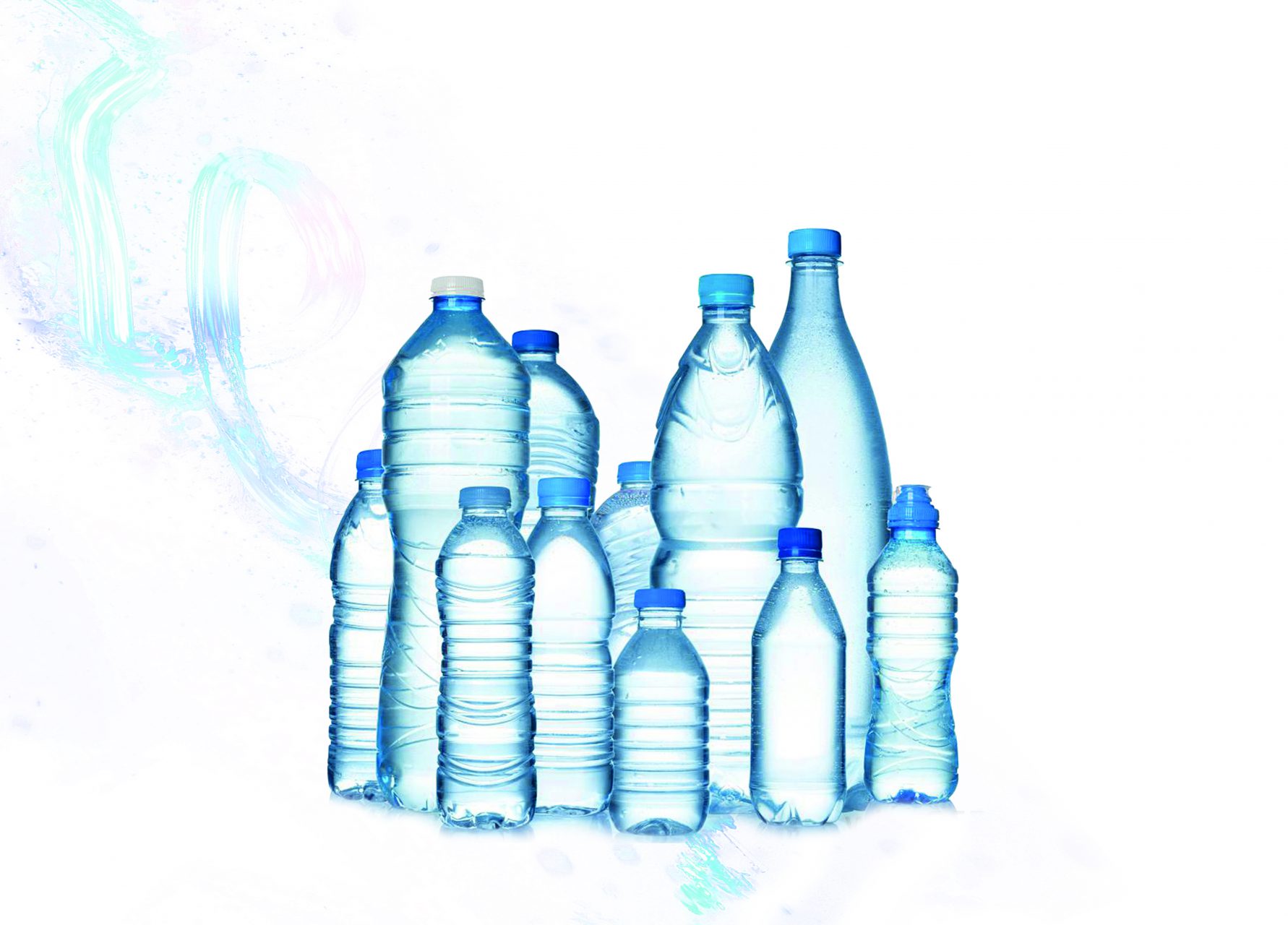
لازم به ذکر است که موارد فوق نمونه هایی از برخی استانداردها و تعاریف موجود در سازمانها و یا نقاط مختلف جهان در خصوص آبهای بسته بندی بود و بدون تردید استانداردهای متنوع و مختلفی در کشورهای مختلف جهان موجود میباشد ، این در حالیست که در حال حاضر استاندارد کدکس که استاندارد ملی ایران نیز بر گرفته از آن میباشد ، به عنوان استاندارد مرجع در روابط بین الملل( WTO ) تلقی میگردد .
